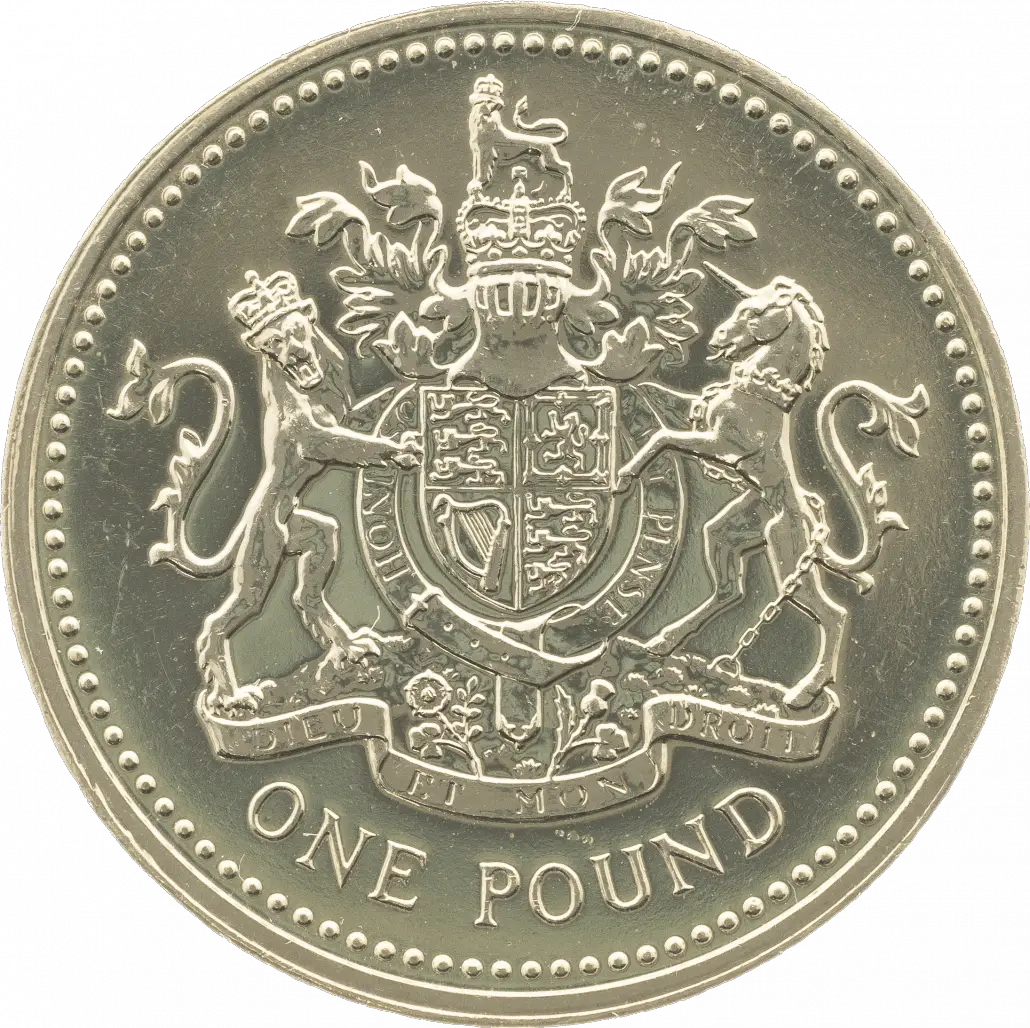In 1983 the pound coin was issued to replace the previously used one pound note, but how much is this coin worth today and is it rare?
According to the most recent values on eBay in 2022, the 1983 one pound coin sells for just over £1 in circulated condition, and between £2 and £6 in uncirculated condition.
If you want to learn about the very first £1 coin issued in the UK then you’ve come to the right place. Keep reading to learn more about the coin’s history, why it has the value above and how rare it really is.
How Rare is the 1983 One Pound Coin?
The 1983 one pound coin holds a special place in coin collectors’ hearts as it was the first year of the pound coin, but this unfortunately doesn’t correlate to the rarity of the coin.
The mintage of the coin was 443,053,510, which is exceptionally high and means that the coin is not considered to be rare at all.
It does seem, however, that collectors are still after uncirculated versions of the coin as shown by the average values on eBay, but keep in mind that it’s very difficult to know what kind of grade you’re paying for.
No Longer In Circulation
On 15th October 2017, the old pound coin was withdrawn from circulation, which means that you’re highly unlikely to find a 1983 one pound in your change.
While most of these coins were handed back to the Royal Mint directly or through shops and banks, a lot of them still remain in houses across the country and it’s not uncommon to find a few hidden away in some drawers.
The introduction of the new pound coins that we use today was due to a rise in counterfeit £1 coins. The new bimetallic £1 coin was introduced with several safety measures, making the coin much harder to fake.
Other Versions Of The 1983 One Pound
The circulated version of the 1983 £1 coin wasn’t the only issue of this coin.
The Royal Mint tends to produce uncirculated versions of coins, particularly commemorative ones, that are issued in different finishes and metals for collectors. You can see the different versions of the 1983 £1 coin below:
| Version | Mintage |
| Mint Sets | 637,100 |
| Specimen In Presentation Folder | 484,900 |
| Proof First Day Cover | 107,800 |
| Silver Proof First Day Cover | 50,000 |
| Silver Proof Piedfort | 10,000 |
If you’re into numismatics you may realise that the 1983 coin set which contains the 1983 £1 coin is the same set which has a small handful of 1983 New Two Pence coins which are incredibly valuable.
Design Of The 1983 £1 Coin
The 1983 Round Pound is sometimes called the Royal Arms. The coin has always represented the United Kingdom and at least one of its constituent parts of England, Wales, Scotland, or Northern Ireland.
These are represented with the English rose, the leek for Wales, the Scottish thistle, and the shamrock for Northern Ireland as well as the two or three oak leaves emerging from a single 5-branched stem within a crown.
The 1983 coin featured the image of a detailed depiction of the Royal Coat of Arms. It was designed by Eric Sewell who was the Chief Engraver at the Royal Mint.

In this version of the symbol that represents the United Kingdom, the shield is sectioned off into four quarters in which the three passant guardant lions of England are pictured in the first top, left quarter and fourth, bottom right. In the second top right quarter is the rampant lion and below it, the double tressure flory-counter flory of Scotland.
In the third, the bottom left quarter is a harp to represent Ireland. Surrounding the shield is the guardant lion wearing St. Edward’s Crown. On the other side is a Scottish unicorn. On the ground below is a thistle, Tudor rose and shamrock to represent Scotland, England, and Ireland. The entire image is crowned with a lion atop the crown also wearing a crown.
The ribbon below reads DIEU ET MON DROIT, God and my Right. The Garter circlet that surrounds the shield is inscribed with the Order of the Garter’s motto, HONI SOIT QUI MAL Y PENSE, from the Old French meaning Shame on he who thinks evil. Underneath the image is the words ONE POUND. The entire image on the reverse side is encircled with raised beaded dots.
The inscription around the milled edge of the coin reads DECUS ET TUTAMEN which translates to mean An ornament and a safeguard. The saying is from Virgil’s Aeneid.
The obverse bears a portrait of Queen Elizabeth II by Arnold Machin. She is facing right and wearing the Girls of Great Britain and Ireland diamond Tiara. The tiara had been a wedding gift from Queen Mary, her grandmother, in 1947. Her name, ELIZABETH * II, is curved to the right of the Queen’s image, and the Latin phrase D * G * REG * F * D * 1983 appears to the left of her profile, which stands for Dei Gratia Regina Fidei defensor. Translated means Elizabeth II, by the grace of God, Queen, Defender of the Faith. 1983 is the minted year. There are raised beads encircling the outside rim of the coin.
